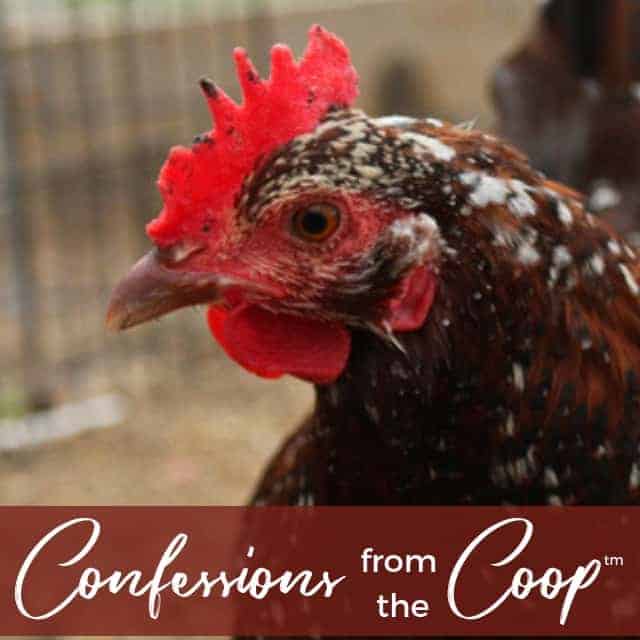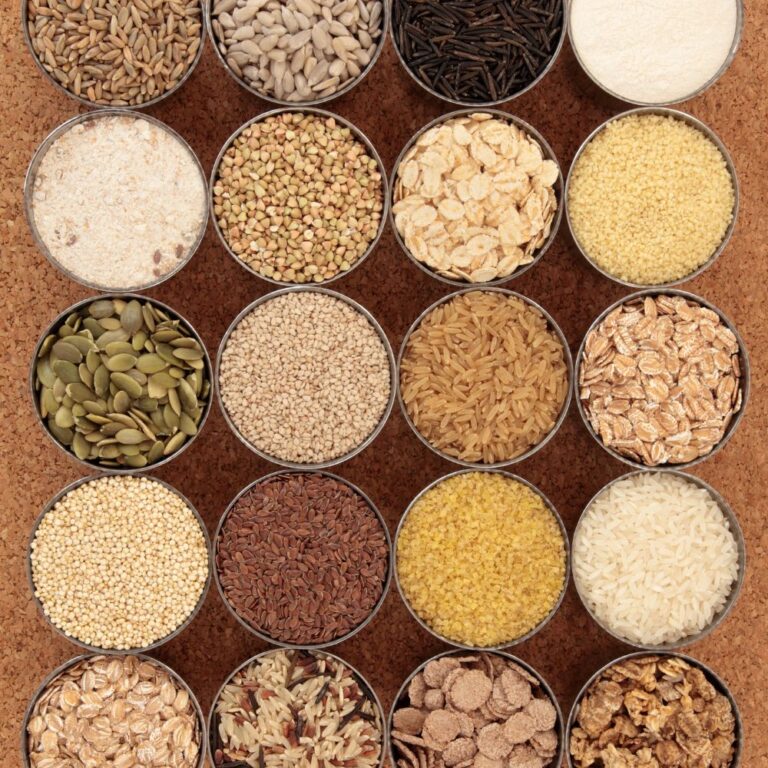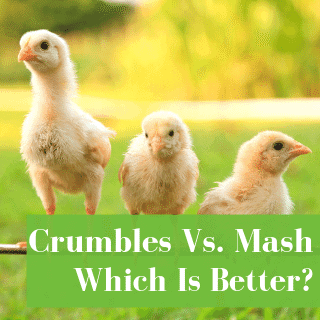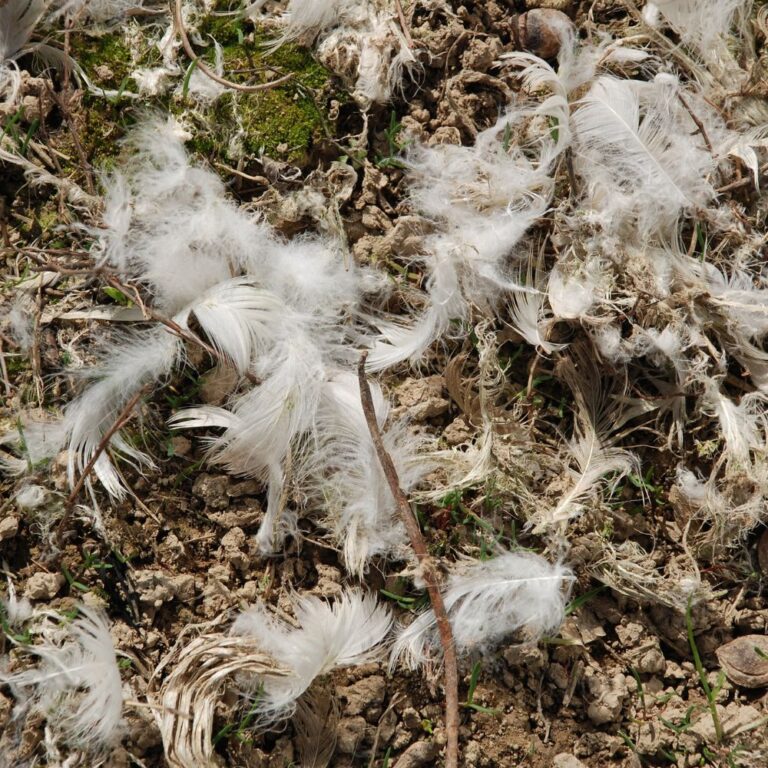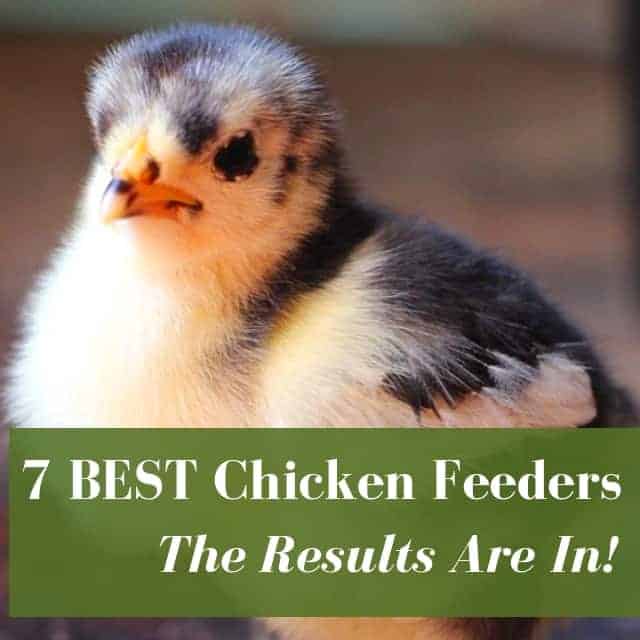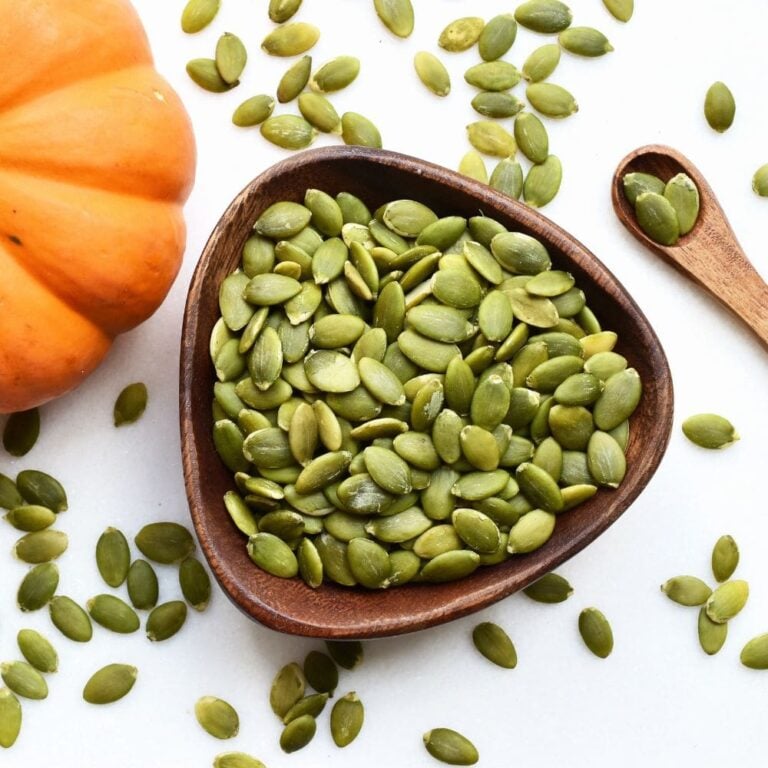Healthy hens and roosters don’t come in baskets from storks. It takes the right kind of chicken feed to turn them into healthy, thriving, fluffy butts in your coop. Read on for an informative Chicken Feed 101 mini course!
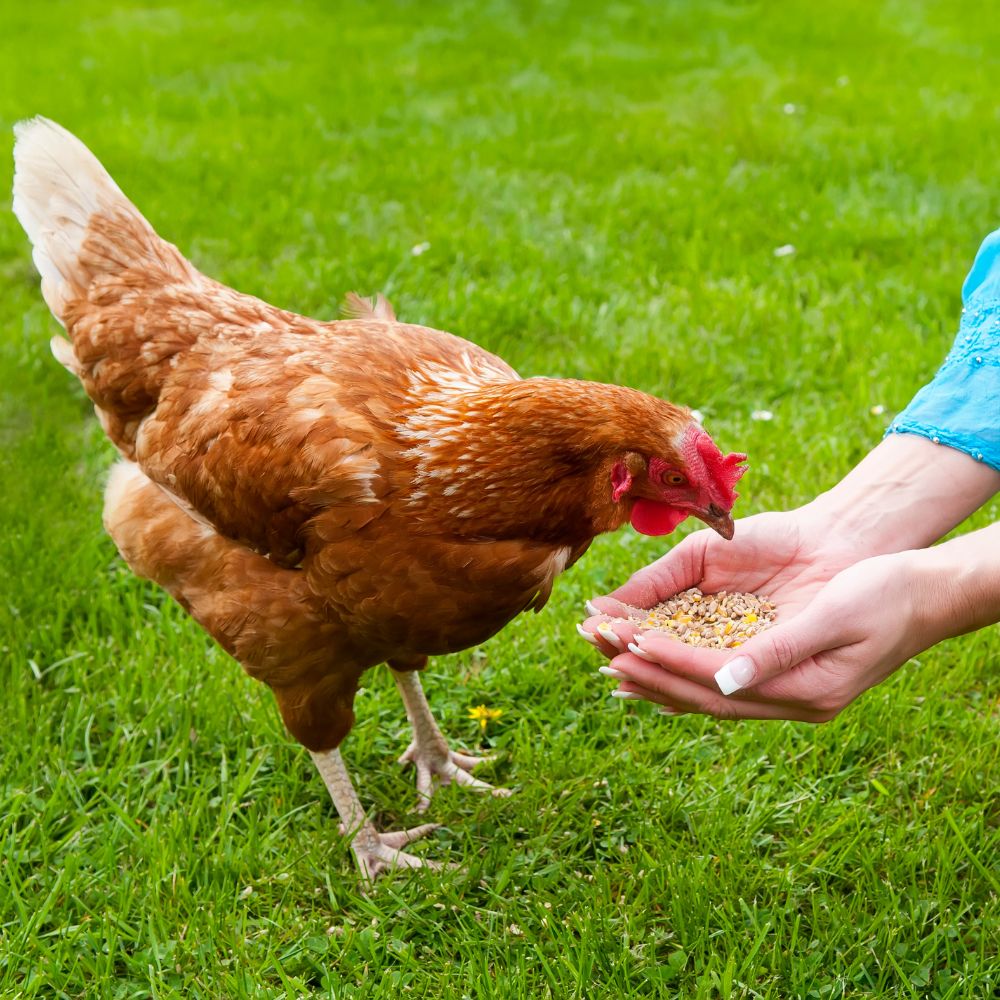
Table of Contents (Quickly Jump To Information)
What is chicken feed called?
There are several types of chicken feeds. Starter feed is a protein-dense variety of chicken feed designed to meet the dietary requirements of baby chicks. To complicate matters, there are varieties of chicken food known as starter/grower feed, which is essentially a type of feed that chickens can eat from 1-20 weeks of age.
You can just feed them starter feed until you transition them to layer feed if you want to, or you can give them grower feed in between.
For day-old baby chicks to 10 weeks, starter feed should be crumbles or mash that contain 18% protein. Don’t be confused with crumbles and mash. Crumbles look like tiny pieces of granola while mash is finely ground chicken feed pellets. Both are easier for chicks to consume compared to huge pellets.
Eventually, they’ll start laying. Chicken layer feed would be similar to the textured mixture of crumbles, mash, and pellets. However, It needs at least 16% protein minimum, with added calcium. Laying hens need high-protein chicken feed as well for more eggs.
Tip: stay away from feeding onions, and other strong-tasting foods to layers. They can cause undesirable-tasting eggs.
What to feed chickens for the best tasting eggs?
After many years of learning, we developed our own feed and packed it full of all the best ingredients. So many folks wanted to learn how to make it but just didn’t haven’t the time or resources so we now sell it. Check it out here.
In addition to the great feed, we also use our very own blend of natural herbs, oyster shells, garlic for immune boosting, and apple cider vinegar granules to balance gut pH and introduce beneficial bacteria.
What do you feed a chicken?
The foundation of any good chicken diet is a high-quality poultry feed. We feed our girls this high protein layer feed, which provides them with the right amount of protein and minerals to keep them at the top of egg production! In short, you can feed chickens:
- Layer feed (16% protein)
- Dried insects like black soldier fly larvae or mealworms
- Vegetables
- Fruits such as grapes, berries, and melons
- Grasses
- Seeds like wheat or millet
What is the best feed for chickens?
The best feed is high in protein, while providing all the nutrients chickens need. While there are a lot of commercial chicken feeds on the market, I still prefer non-GMO chicken feed. We’re proud to have a nutrient packed chicken feed that nourishes your flock and also gives chickens fluffy feathers and the best eggs! Click here to get the best chicken feed ever.
If you want to make your own homemade feed, just make sure it has essential chicken feed ingredients. You can read my favorite chicken feed recipe here.
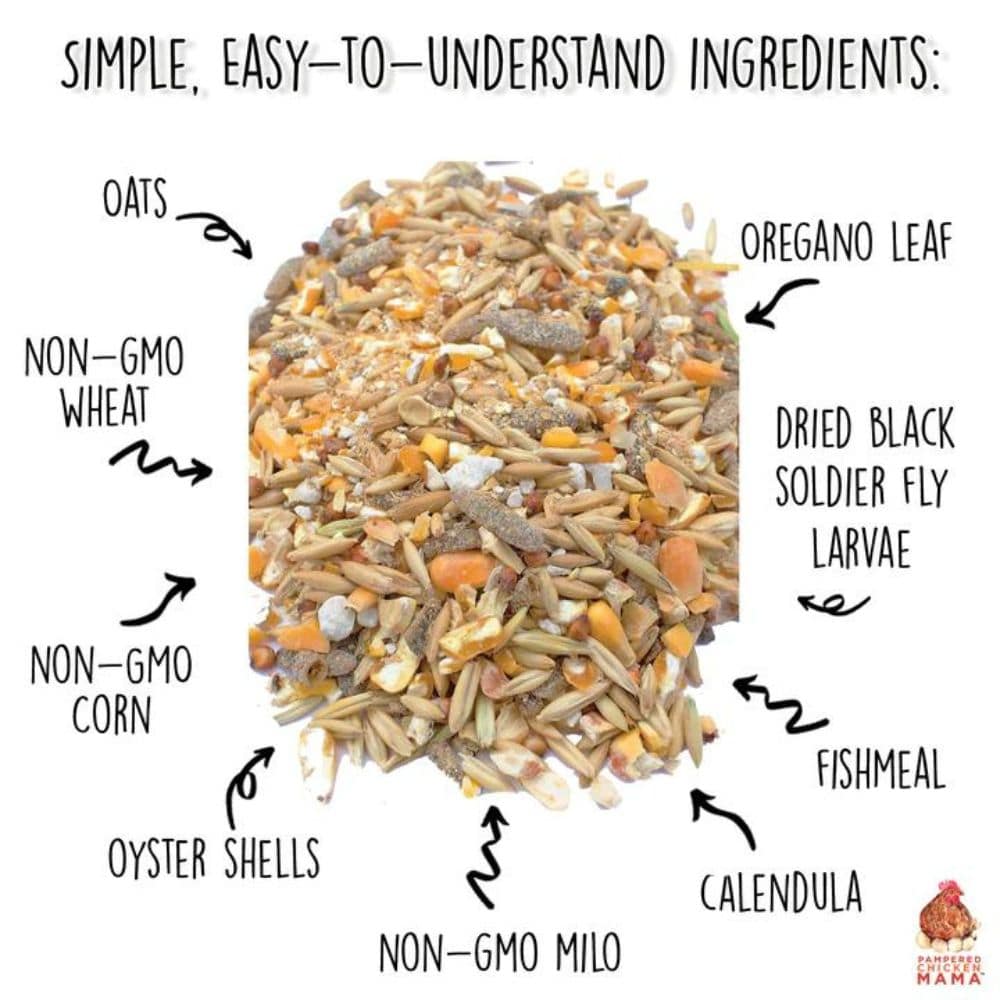
How much do you feed a chicken per day?
A well-known ballpark figure for estimating purposes is 1/4 pound of feed per chicken per day, or, 1.5 pounds of feed per chicken per week. Keep in mind that this is a ballpark figure, and you’ll need to watch your flock’s intake. If they gobble their feed quickly and still seem hungry, offer more.
Do free-range chickens need feed?
Yes. Even though they have access to pasture, you still need to give them poultry chicken feed to make sure they’re getting the right kind and enough nutrition, especially during winter. During summer, when there are plenty of bugs and grass, you can cut way back on feed.
Do chickens need food and water at night?
Chickens roost and sleep at night, and they won’t get up to eat and drink until it’s light again. However, you should always provide 24 hour access to water just in case. There’s always a chance that you might forget to put their water out. You also might have an emergency and have to leave in a hurry…or any number of things. So be sure to keep water out and full at all times.
Here’s a list of waterers we recommend.
How often should chickens be fed?
This is a very common question in growing backyard chickens. Food must be available to chickens whenever they need it. The full feeding method is a good technique to guarantee that there is a constant supply of feed at all times.
You can also use automatic feeders like these. We’ve also reviewed Duncan Feeder’s automatic feeders here.
How much food does a chicken need per day?
¼ cup of a high-quality chicken feed is a general guide. It’s best to offer free choice all day.
Can you overfeed chickens?
Everything must be taken in moderation. Overfeeding chickens is possible and they may become obese (especially if they’re confined to the coop). Free-range hens however get enough exercise and are unlikely to be obese.
In truth, it’s very hard to overfeed a chicken. They are pretty good at eating only what they need.
Do free-range chickens need scratch?
No. They don’t. Unless it’s winter and the ground is covered in snow.
There’s also grit. Grit is not feed, it’s rocks. Chickens need grit to help digest their feed. It’s their equivalent to teeth. Free range chickens will find their way to grit in the form of tiny bits of stone and gravel but it would be helpful if you threw some in the coop or their feed too.
Grit comes as flint and oyster shells. Oyster shells are soluble and they provides calcium which benefits layers in particular. It’s just like feeding chickens with eggshells.
What should you not feed chickens? What foods are poisonous to chickens?
While looking for alternative chicken feed, you might have considered beans. Although they look like something chickens would eat, dried and raw beans are a no-no. It contains phytohaemagglutinin which is fatal to chickens. Moldy fruits and vegetables aren’t good as fowl feed either.
Caffeine is also toxic to chickens. Giving them a few pecks of chocolates would not cause too much harm but you should know that chocolates have been known to cause cardiac arrest in birds!
Other foods that are not good for chickens are:
- Processed food
- Raw potato peels and green potatoes
- Avocado skin and pit
- Raw meat
- Greasy food
You can see a list of what not to feed chickens here.
What scraps can chickens eat?
Some table scraps that are safe for chickens to consume are:
- Vegetables (cooked or raw)
- Fruits (leave the seeds out)
- Grain
- Oatmeal
- Corn (cooked, raw, and dried)
- Peas
- Bread
- Yogurt
Again, make sure that these foods are not moldy or spoiled. You might have also heard of feeding chicken expired yogurt. It’s not something to be frowned on. Feeding chicken yogurt helps even out chicken gut bacteria for better digestion. You can also add a few tablespoons of yogurt when fermenting chicken feed.
Can you feed treats to chickens?
Yes! Small amounts of fruit are always a great choice. So are table scraps, they love them. If you want to be sure your treats are also providing the very best nutrition, give them these protein and vitamin packed treats!
Where can I buy chicken feed?
You can find chicken feed for sale at local farm stores. However, farm stores usually sell the most basic feed. You can find premium feed, with many added goodies on Amazon here.
How can I feed my chickens cheaply?
To reduce your chicken feed bill, free-ranging is a good idea. A garden can provide additional and natural feed for your chicken as well.
Another option is to make your own chicken feed. Learn how to make chicken feed and check out my chicken feed recipe here.
What can I grow to feed chickens?
Growing chicken feed is not complicated at all. Remember what was in grandma’s garden and sow them! Chickens can eat vegetables like corn, lettuce, kale, and any other leafy vegetable you usually grow.
Sunflowers and millet are great seed producing plants too! These make great grower feed for chickens and organic chicken feed too.
Summary
When all is said and done, the main things to remember is to feed your chickens a good, high quality, high protein feed. And provide plenty of fresh water. Plus be sure they have enough grit if they are not free rangers. After that, you can look into special treats and supplements.
There you have it. A sweet little mini course chicken feed! Now, go feed those feathered friends!
Maat van Uitert is a backyard chicken and sustainable living expert. She is also the author of Chickens: Naturally Raising A Sustainable Flock, which was a best seller in it’s Amazon category. Maat has been featured on NBC, CBS, AOL Finance, Community Chickens, the Huffington Post, Chickens magazine, Backyard Poultry, and Countryside Magazine. She lives on her farm in Southeast Missouri with her husband, two children, and about a million chickens and ducks. You can follow Maat on Facebook here and Instagram here.

